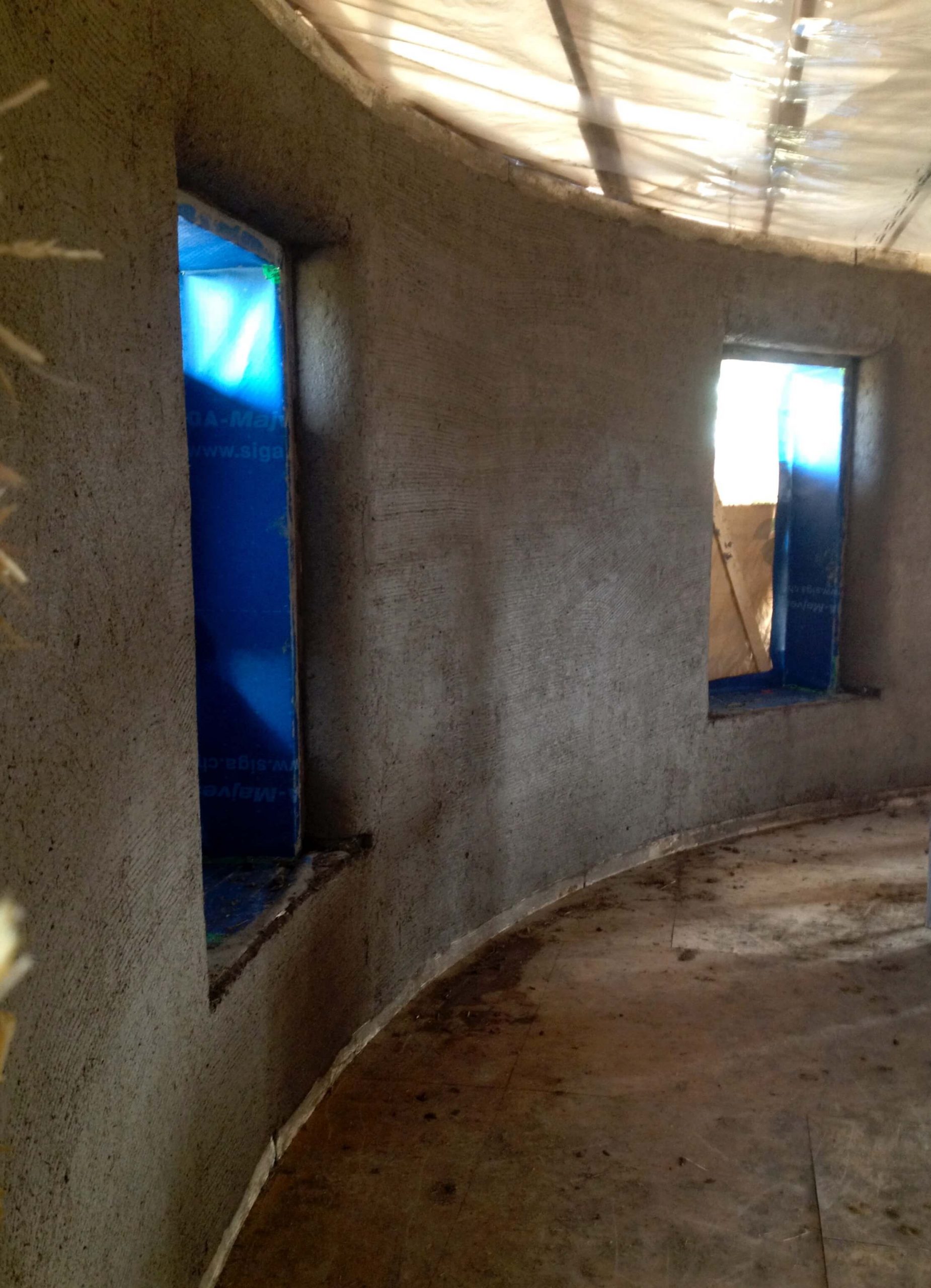Straw bale wall systems have been touted for 20+ years now as a way to achieve higher insulation values with lower environmental impacts. And, having built many straw bale homes and commercial buildings now, we know this is true. However, we have also seen that without attention to air sealing details, many straw bale buildings are quite leaky and fall short of their potential level of energy efficient performance because of this.
Along with many straw bale compadres world-wide, we’ve worked to come up with details that address these issues of air tightness in straw bale buildings. Our latest project for the Trillium Lakelands Elementary Teachers’ Local offices have good examples of easy ways in which a bale wall can be built to be air tight without reliance on whole-wall vapour barriers or other sheet membranes.
Plastered straw bale walls have a naturally air tight nature thanks to the continuous plaster coating. Any crack-free layer of plaster does an excellent job of stopping air movement through a wall. However, where plaster meets other materials (at the top and bottom of each wall, at each door and window opening and around through-wall vents and pipes), just plastering up to these seams does not create an air-tight barrier. All plaster types share the characteristic of shrinking as they dry or cure. Every edge of a plaster wall will pull away and leave a gap as the plaster shrinks. It may not seem like much, but even a 1/16 inch gap at the top of 100 feet of wall area is the equivalent of 75 square inches of “hole” in the wall! Add that same gap around every window and door and at the bottom of each wall and you may have a hole in your wall of up to 1.5 square feet! That’s like leaving an average sized window open full time!
Most homeowners understand that having a window open all winter long would have a negative affect on the amount of energy used to heat the home. But many people do not put the time and effort into “closing the window” around the perimeter of their straw bale walls.
For some, there is a reluctance to build air-tight because of a notion that it is unhealthy to seal a house “too tightly.” However, it is also unhealthy to be drawing outside air into your home through cracks and leaks in your walls. That infiltrating air picks up dust, spores, and anything else that is in the walls on its way into the house. Seal the house properly, and deal with the ventilation that is required in an intentional, clean way.
It’s not difficult to make an air tight bale wall. But it does take a thoughtful and careful approach to detailing to get it right.









